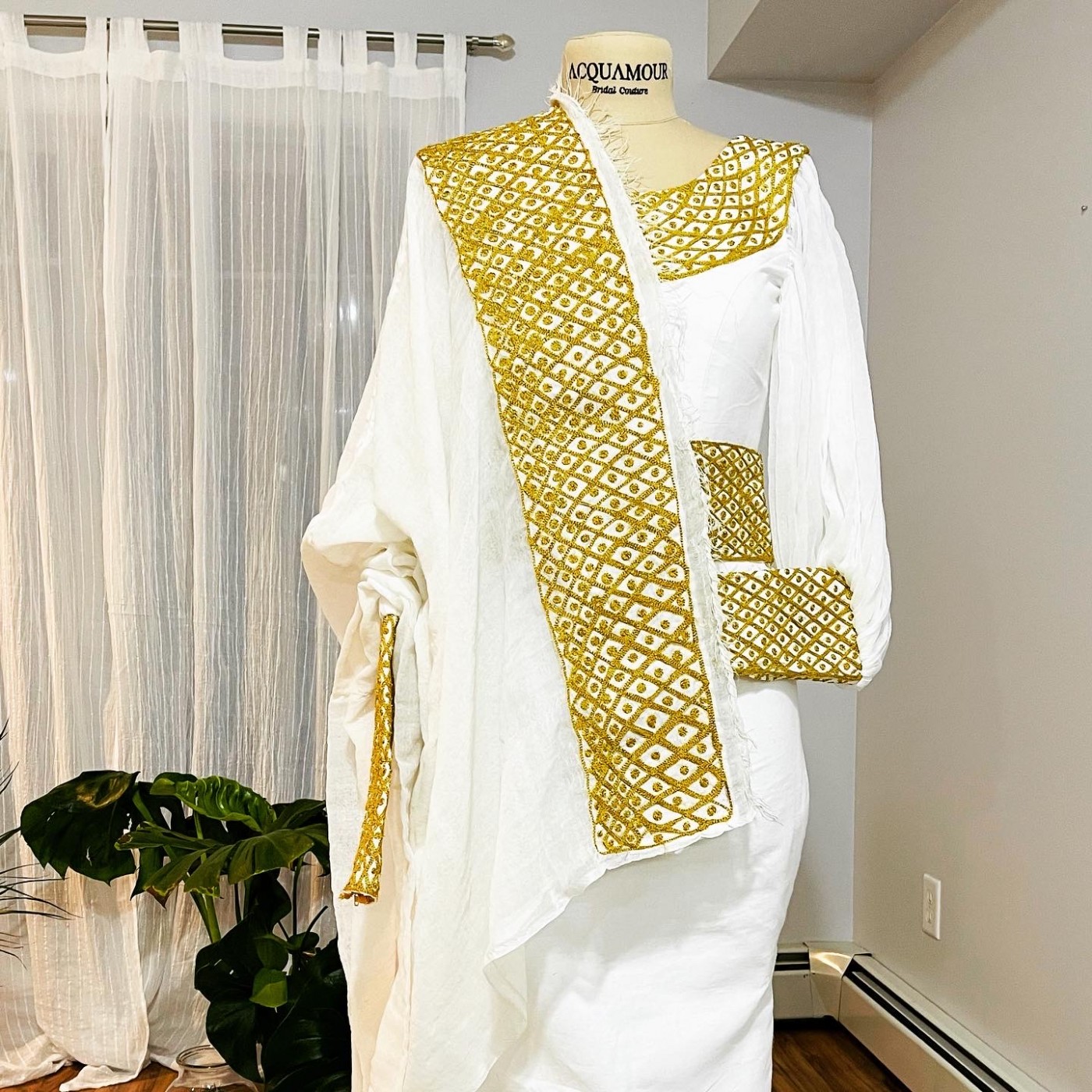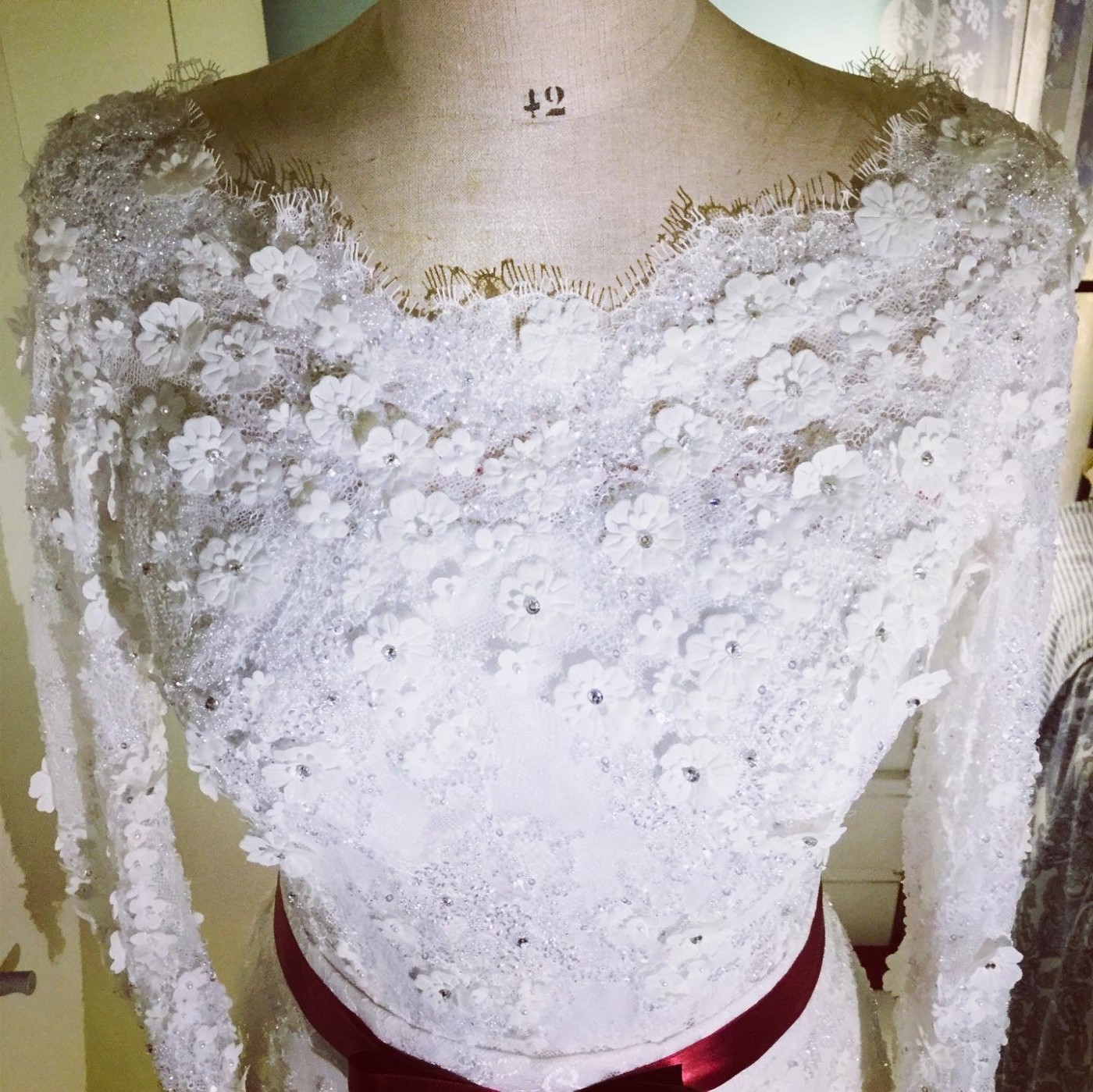- youtube
- bluesky
- Home
- About
- Costume Journal
- Membership
- Conference & Events
- Grants & Awards
- News & Social
In this week's blog, bridal designer and Costume Society member Jerie Mehari introduces us to her bridal studio, Acquamour Habesha Bridal Couture. Currently based in Canada, Jerie takes us on a journey from the beginnings of her brand in her native Eritrea, all the way through the traditional Habesha fabrics, garments and bridal wear that inspire her work into the present day.
Hi there, I am Jerie Mehari, Creative Director and Designer at Acquamour Habesha Bridal Couture. I am here to share my journey with you, and to tell you a bit more about Acquamour.
You may wonder, what does Acquamour mean? Acquamour means ‘water of love’. I grew up by the Red Sea in Asseb, Eritrea. I love and miss the sea, and I also wanted my brand to reflect and express the love that freely flows between the couples I work with; the love that binds them together, the strong bond of love that brought them to marriage. It needed to be one word that expressed everything. At studio Kankua with the brilliant Rebeka and Dario Cheisa, we had several brain-storming sessions and arrived at ‘Acqua’ and ‘Amour’, merging them into one word. That is how Acquamour was born. I think it is such a pretty name with so much meaning!
Acquamour is a slow bridal fashion brand that focuses on couture techniques, vintage style, with a bespoke fit for a modern bride. My background is fashion: I studied Fashion Portfolio and Surface Textiles for Fashion at London College of Fashion (UK) from 2004 to 2007. I spent years sharpening my skills in couture, and bridal couture has always been where my heart is set.
It all started when I was seventeen years old, running around to help my friend Asnaketch find a wedding dress for her big day. When I found the one, I knew she would love it. I showed it to her and words can’t convey how ecstatic she was, it was pure joy. Ever since then I dreamt of having my own bridal couture brand, to bring every bride I work with the same joy and happiness. In August 2020, at long last, I realised my dream and started Acquamour Habesha Bridal Couture.
Over time I developed a sense that I am more attracted to natural fibres like silk, linen and organic cotton, and so started to incorporate more of these into my work. The use of natural materials makes my work sustainable, breathable, but also comfortable.
I believe in bridal creations that incorporate couture sewing techniques, bespoke fit, and vintage style, built around a slow fashion attitude. It gives me great pleasure making elegant, classic and timeless heirloom dresses. I believe that if bridal gowns are made well and with natural fibres they can be worn and passed on for many generations to come.
I love creating wedding dresses from traditional Habesha traditional Libs. The hand weavers’ work, the hand and machine embroiderers, the traditional Gold work – it all inspires me to create something special and unique.
The cultural Habesha wedding garments start from the fields of cotton farms, then move through a process of preparation, separation, spinning, and hand weaving. It is also common to wear a velvet Kaba with goldwork embroidery called Mukash on top of your Kuta or Kemise.
Habesha Libs are amazing to work with. The delicate Habesha fabrics that are woven on hand operated looms are soft, breathable and comfortably glide over your skin. The woven fabrics are known as: Menen, Fetill, Zir Zir, Etirtir, Double Woven Menen, Pece, Netela, Gabi and Debella, (though Debella is woven on a mechanized Loom).
Traditionally all these materials are woven in white with different colours of borders added depending on the intended purpose of the garment; either Kemis, Gabi, or another use. Zirzir and Fetil are woven plain white, with crinkled effects and decorative hand embroidery.
These traditionally made dresses are worn for special occasions, weddings, holidays, and Sunday Best. All of these events call for beautifully crafted garments worthy of the occasion. It is inspiring to work with Habesha libs, the delicate fabrics and the beautifully woven borders known as Tilet or Tibeb get my creativity going!
Lately, I have been studying and looking into Habesha historical bridal wear. For example, researching the dresses worn by Queen Tirunesh/Truwork - the second wife of King Theodore II - has been an amazing learning journey. The design and the workmanship is both mesmerising and educational. The fabric used, the silk embroidery, and the intricate silver decoration is just awe inspiring.
I have so much more to share so I think it’s best I update you gradually through my blog which you can find at www.acquamour.com/blog. My blog covers both current and past projects; stay tuned!
For more pictures and current projects do visit our Instagram, TikTok, YouTube and Pinterest accounts.
If Jerie's beautiful designs have got you in a romantic mood, explore more wedding dresses in our previous blog post.
Image gallery

Embroidered borders on Jerie's work.

Stunning lace and detailing on an Acquamour bridal dress.

A gold embroidered Kaba for a groom.

A gold embroidered Kaba for a bride.

Modern yet traditional Habesha for Meles, or the second day of the wedding.